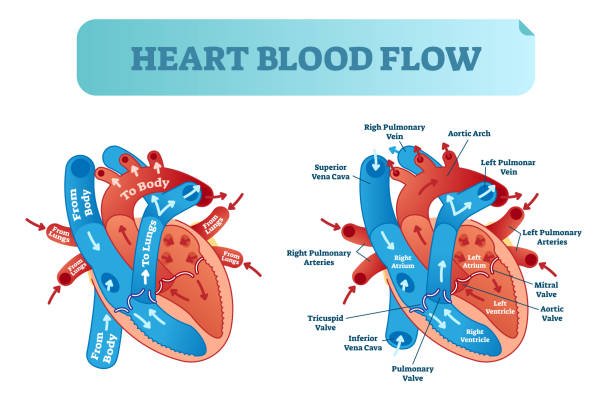
Maintaining Heart Health: An Introduction to Heart Health and Function
The heart is a key organ that maintains the normal operation of various functions of the human body. It controls the flow of blood. Any organ, tissue or cell in the body cannot survive without the nutrients supplied by the blood. Therefore, maintaining heart health is something that each of us should pay attention to. subject. This article will take you through how your heart functions and works, as well as ways to keep your heart healthy and the possible consequences of a damaged heart.
Important structures and functions of the heart
Let’s first review the biology class we have taken and review how the heart works. The heart beats an average of 2.5 billion times in a person’s lifetime. A stable heartbeat rate carries oxygen, hormones, and blood of various compounds to all parts of the body, providing the fuel needed for cell work and taking away waste products such as carbon dioxide.
Blood circulation
The heart is located on the left side of the human chest and is divided into two parts, the left heart and the right heart. This division prevents the heart from mixing deoxygenated blood and oxygenated blood in the same space.
Oxygenated blood is pumped by the left side of the heart, proceeds to the systemic circulation via the aorta, and travels to various parts of the body to supply cell nutrients. After returning to the right atrium, it becomes hypoxic blood, and travels to the lungs through the pulmonary artery to obtain fresh oxygen. The pulmonary veins return to the left atrium to complete the pulmonary circulation and prepare for the next round of systemic circulation.
Cardiac electrical conduction
The heart is like an electric pump, pumping blood throughout the body. The power of the pump mainly relies on the sinoatrial node (SA node) located in the right atrium to send electrical signals to stimulate the contraction of myocardial tissue to generate heartbeats. Each heartbeat It means that the heart performs a contraction and relaxation action.
When the heart contracts, blood is pumped out of the heart, and the heart valves close to prevent blood from flowing backward; when the heart relaxes, the valves open to allow blood to flow into and fill the ventricles in preparation for the next contraction.
Heart valve
There are four valves in the heart that control blood flow by opening and closing. If the valves are incompetent, prolapsed or hardened, blood reflux or cardiac hypertrophy may occur, and valvular heart disease may develop. (Additional video on the same scene: No signs of aortic stenosis? Learn about symptoms and treatment)
- Aortic valve
- Pulmonary valve
- Tricuspid valve
- Mitral valve

Coronary artery
It is a blood network that branches off from the aorta and supplies nutrients to the heart. Due to the small diameter of the blood vessels, fatty plaques can easily accumulate and block the pipes, causing coronary heart disease.
How to maintain heart health?
The Ministry of Health and Welfare recently announced the top ten causes of death in the 109th year of the Republic of China. Unsurprisingly, heart disease still ranked second. If you meet the following behaviors or postures that are harmful to the heart, it is recommended to start improving them as soon as possible to reduce the threat of heart disease.
- smokes
- alcoholism
- Poor hygiene habits
- obesity
- unhealthy diet

However, there are some risks that are unavoidable, such as a family history of heart disease or natural aging caused by old age. If you are in a high-risk group for heart disease, you should pay special attention to your heart health. You can understand or detect heart abnormalities early and reduce the chance of suffering from cardiovascular disease through the following methods:
- cholesterol check
- Measurement of blood pressure
- Eat more fruits and vegetables
- exercise every day
- good sleep
Consequences of poor heart health
When you think of heart problems, what do you think of? Terms such as coronary heart disease, arrhythmia, and valve prolapse may come to mind. Yes, these symptoms and diseases are just a few of the possible health problems of the heart that may persist if not properly treated. worsen, causing myocardial infarction or heart failure.
Since there are many types of diseases, the more serious conditions are taken as examples here. If a person smokes frequently and eats an unhealthy diet, he may be at risk of atherosclerosis. Once the arteries are completely blocked and nutrients cannot be transported to the heart, acute myocardial infarction (AMI) will occur, which requires immediate treatment. First aid, because the heart muscle is gradually dying every second.
If the rescue time is delayed, the patient may suffer from heart failure even if the rescue is successful. This may increase the risk of another heart attack in the future or result in reduced heart function that affects the functioning of other organs.
The following will list common heart disease symptoms. If any of them match, please seek medical diagnosis:
- Angina pectoris (sense of pressure from heavy objects)
- Difficulty breathing, rapid breathing
- Feeling light-headed and about to faint
- Neck, arm, back, jaw pain
- faint












